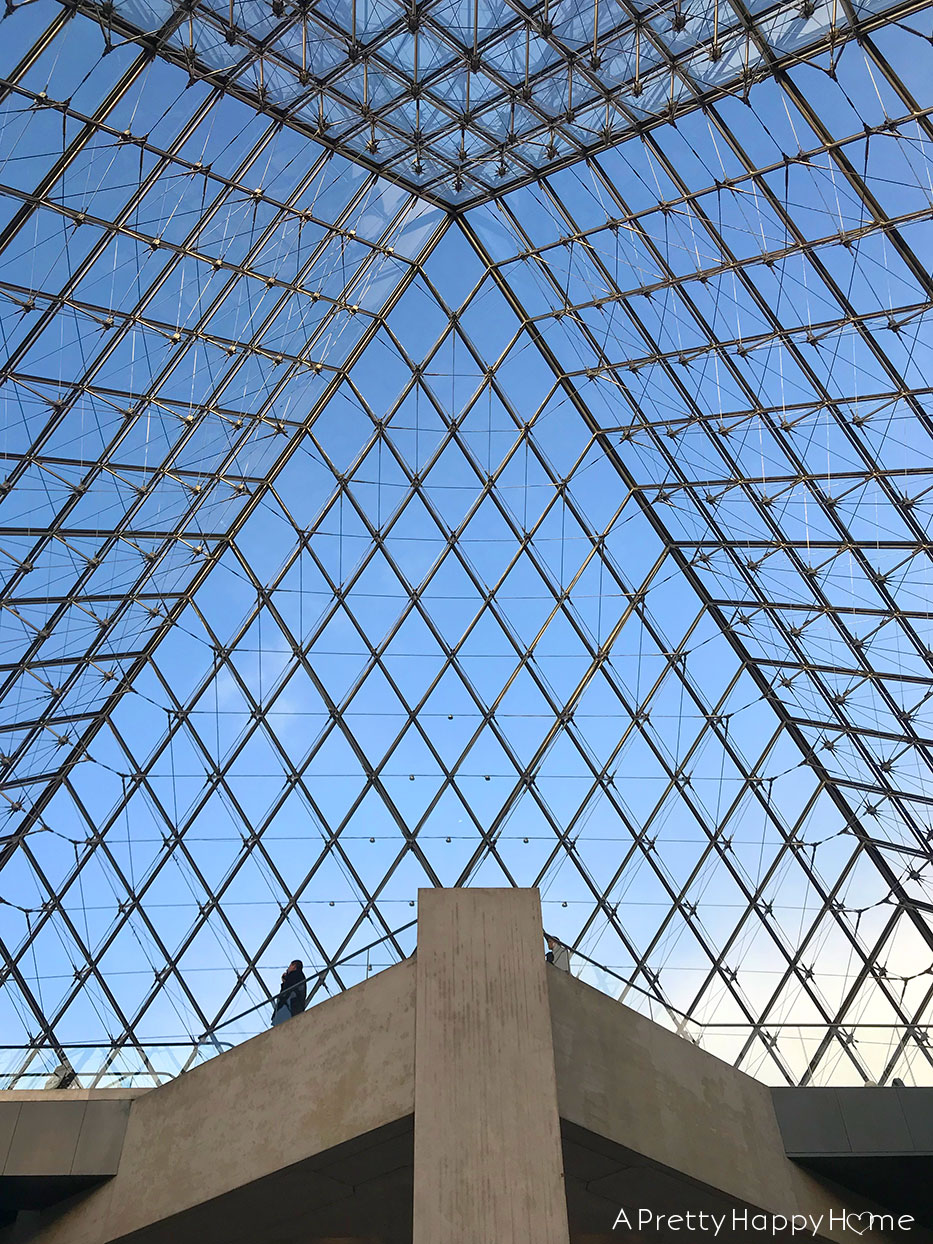
Travel: The Louvre With Kids
My kids (ages 7 and 10) had two things and really only two things they wanted to do while in Paris.
- Climb the Eiffel Tower. (I wrote about that experience here.)
- See the Mona Lisa at The Louvre.
I understand the Eiffel Tower, but I wanted to know how they knew about the Mona Lisa and where she lived. I could have made an educated guess where she’s hanging these days, but that’s not knowledge I store in my head.
“Mooom! We learned that in school!”
Thank goodness. There are days when I wonder if anything I say is sticking in their heads.
WHAT’S THE BIG DEAL?
The Louvre has seen a tremendous amount of history in over 800 years. It was originally a fortress. It later became a palace for the French kings. It’s also been a site for government offices.
Today, The Louvre is probably the most famous art museum in the world. It’s definitely the largest and most well-visited.
In 2016, 7.3 million people visited The Louvre. I don’t know if all 38,000 exhibits are on display at once in the museum (I suspect not), but they do have a ton of space. 782,910 square feet, in fact. If my calculations are correct, that’s slightly more than 13.5 football fields. Let me say – it felt huge! Especially when we were trying to find our way out!
Fun fact: The museum was paid $2.5 million as a film location for The Da Vinci Code based on Dan Brown’s book.
WHEN TO GO
When should you visit The Louvre? Definitely not a Tuesday. The Louvre is closed then. Actually, a lot of museums in Paris are closed on Tuesdays, so factor that into your trip plan. Double check The Louvre calendar for any other public holiday closings – there’s at least 3 a year.
I have read on a few blogs – but can’t verify – that the museum is less crowded at night. If you are traveling without kids or with kids who can handle an evening visit, that might be an option for you.
The permanent collections are free on the first Sunday of each month from October to March. I can’t vouch for how busy those days are though.
Also, if the River Seine is flooding, like it is at the time I was working on this post, the museum may have to close some displays in the basement. The Mona Lisa is not on the basement level though.
MY MOST IMPORTANT TIP FOR ACCESSING THE LOUVRE
The Louvre has 3 entrances for individuals: Pyramid, Galerie du Carrousel and Passage Richelieu. There’s a fourth entrance for tour groups.
The Pyramid entrance is the MOST visible and iconic. It’s also the easiest to find and the one ALL the tourists use. It’s the one you use if you’ve purchased advance tickets too.
We chose to arrive at The Louvre right around opening time and there was already a long line at the pyramid. Did I mention it was miserably cold and windy that morning?
Handy Husband read online that the other entrances to the museum are far less busy. The trouble is finding them. They don’t seem to be well marked, which is probably why they are less busy. I ended up asking a grounds crew worker for help.
So, here’s what you are going to do. Look for this HUGE arch directly across from the glass pyramid. It’s big and ornate – you can’t miss it. This is the Galerie du Carrousel entrance.
To the right and left of this arch are stairs going underground. Take the stairs. It doesn’t matter which side, they both end up in a kind of empty looking building. Just keep going and you’ll see a security line. We walked right up to it – no waiting.
Once you go through this security line, you’ll be inside The Louvre. There will be shops and a little way up on your right hand side will be the place where you buy tickets.
To be clear, the lines to get into the museum are because of all the security. I don’t know how much time we saved by using the Galerie du Carrousel entrance, but it definitely saved our sanity! Even if there happened to have been a line at the Galerie du Carrousel entrance, we would have been waiting inside not out in the elements.
I can’t help you with accessing the Passage Richelieu entrance as we never did find that one. It’s also supposed to save you a ton of time.
HOW DO YOU BUY TICKETS
I’m assuming you haven’t bought advance tickets online.
If you haven’t, you’re going to queue up in a big room to buy your tickets from a ticket machine. I’m not sure how many machines they had – I’m guessing 50 – but it made the process much more efficient than I thought it would be.
You’ll be using a touchscreen and you can switch the language to English. I can’t remember if they accepted cash, as we used our credit card.
Kids under 18 are FREE (woohoo!), but you still need to print out a ticket for them.
You can also purchase tickets for a guided tour, but we chose to explore the museum on our own.
AFTER TICKETS – THEN WHAT?
After you get your tickets, you’re going to store your stuff in a coat room. Picture the largest, nicest locker room you’ve ever seen – minus the showers and the weird smell.
I suppose if you weren’t traveling with a backpack or jackets you might not need to utilize the coat room. I’m the mom that ends up holding everyone’s stuff, so I was very happy to avail ourselves of this service!
The lockers are free. Just find one that isn’t in use. The locking mechanism is very similar to a hotel safe where you set the code. Choose one you can remember!
There’s even a special spot to store and lock your umbrellas.
I thought it was all very handy.
FINALLY ENTERING THE MUSEUM
After all of that (phew!), you can finally take your ticket and enter the museum.
There’s a line where a staff member will scan your tickets. Depending on how busy it is, it might take a few minutes to work your way through the line.
Audio guides are available to rent right after you scan your entrance ticket. Make sure you have ID with you for this and I believe the cost is 5 euro. If you don’t want to rent an audio guide there is an app you can download to your smartphone.
In retrospect, we should have taken the time to rent the audioguides. We were (naively) assuming this museum would be like a lot of others we had visited throughout Europe and user-friendly to English speakers. It wasn’t.
The labels on the art are all in French (see above photo). Some of the galleries do have laminated sheets of information about the artwork and artifacts in various languages including English, German and Spanish.
The audioguides, which are on Nintendo 3DS devices, would have helped engage our kids in the experience just a little bit more. I definitely would have benefited from the added information.
HOW WAS THE MONA LISA?
Have you ever been in a mosh pit at a rock concert?
Well, me neither, but I can imagine some of the elements were the same minus the music and body surfing.
This was as close as we got to the famous lady.
Somewhere in the midst of all of those people was a line to get to the front to see her. Perhaps it was organized chaos, but it was still chaos and I didn’t find it particularly pleasant.
We lifted the kids up so they could see her and asked if they wanted to wait in line. After all, this was one of the things they wanted to see in Paris and I was willing to take one for the team. However, they’d had enough of looking at strangers’ backs and were ready to move on.
The areas of the museum with the paintings were BY FAR the busiest.
We felt less overwhelmed by all the tourists in the areas with Egyptian antiquities and Islamic art. Basically, anywhere other than the paintings.
I’m telling you this not to be a downer, but just to help you mentally prepare.
OTHER TIPS FOR A SUCCESSFUL TRIP
Try to learn about The Louvre before you go. Even a little bit of information about the more famous art pieces will give your kids something to look for and will make the experience more meaningful.
The museum is definitely a “DON’T EVEN THINK ABOUT TOUCHING” place. The only area visitors are encouraged to touch the exhibits is in the Tactile Gallery.
Scour The Louvre’s website for information before you go. They have maps, helpful hints, info about the exhibits and audio guide suggestions. They even have resources for kids. Do not skip this step.
Take a break if you want to spend a long time at The Louvre. You can step out of the exhibits to go to a cafe, for instance, and then come back later when your blood sugar is back up! With our kids, we arrived first thing in the morning and spent a couple of hours touring the exhibits. After that amount of time they were more than ready to be done and have lunch.
We did not see a lot of kids during our visit to The Louvre. Perhaps a museum full of priceless art you can’t touch does not scream “great place to spend the day with kids.” I totally get that – especially if you have toddlers.
However, kids are sponges for information and The Louvre is filled with wonders. I cannot emphasize enough how profound it is to share this glimpse of history and artistic greatness with them. Our conversations ranged from what the Egyptians thought about death to why are there so many naked sculptures? Yes, we giggled a lot. Art is supposed to evoke an emotional response!
Bottom line, if Paris is a ‘once in a lifetime’ trip for your family, I’d definitely plan on touring The Louvre with your kids. There is so much enrichment to be gained from the experience and I’m certainly happy we went.
If you liked this Travel With Kids post, here are some others:
Travel: Eiffel Tower With Kids
Travel: Copenhagen, Denmark With Kids
Visiting Ireland: The Cliffs of Moher and Aran Island With Kids
A Day in Malmo, Sweden With Kids
Visiting Ireland: Galway With Kids
Visiting Ireland: Kissing the Blarney Stone at Blarney Castle

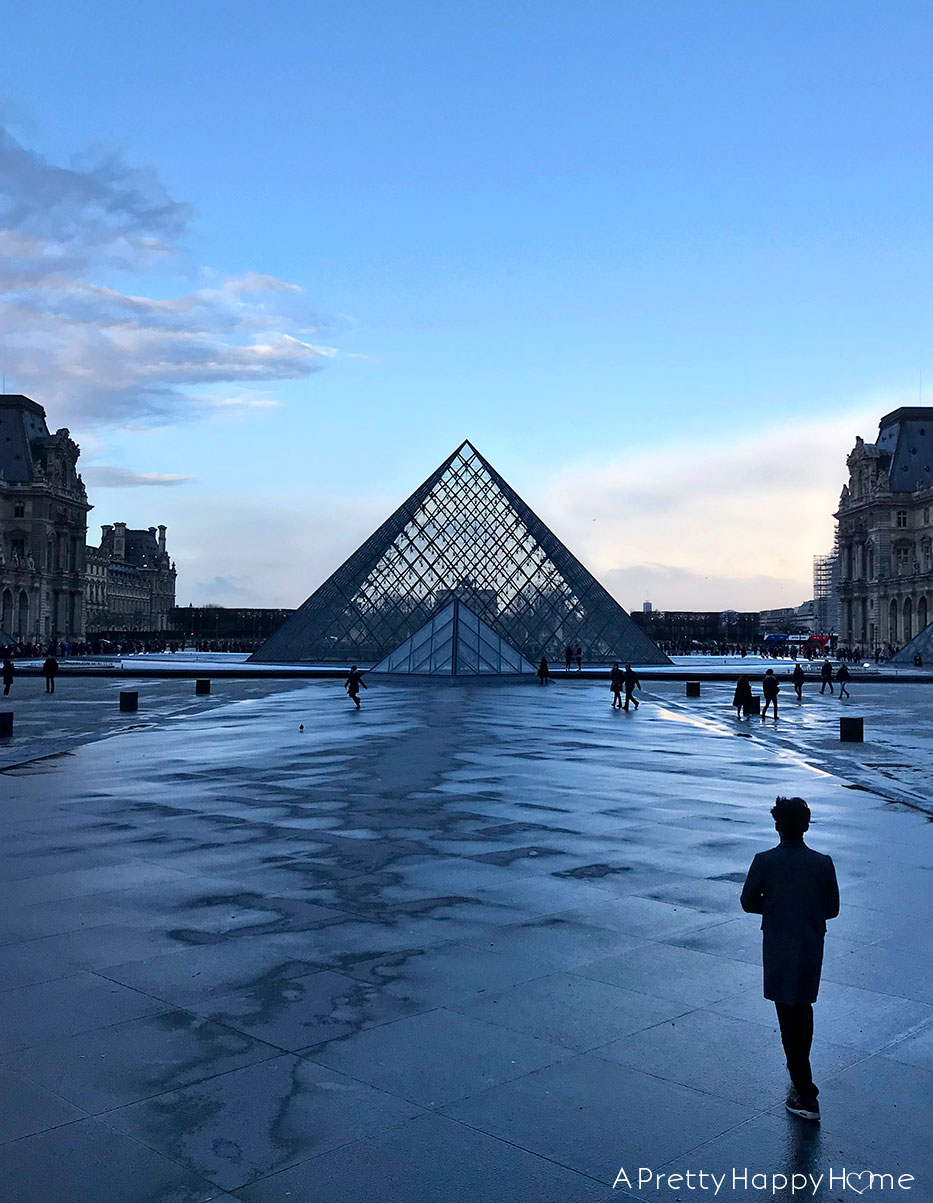


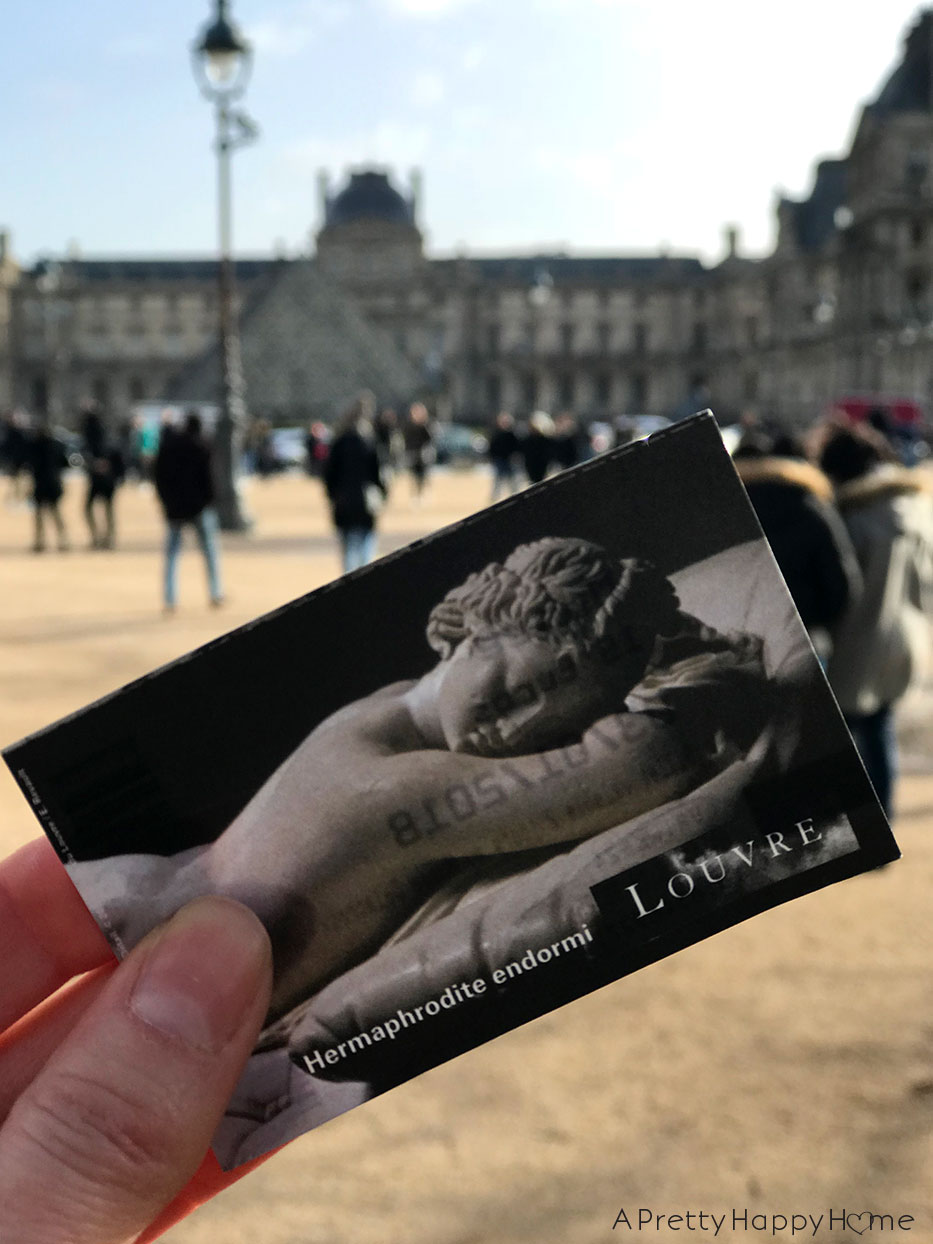
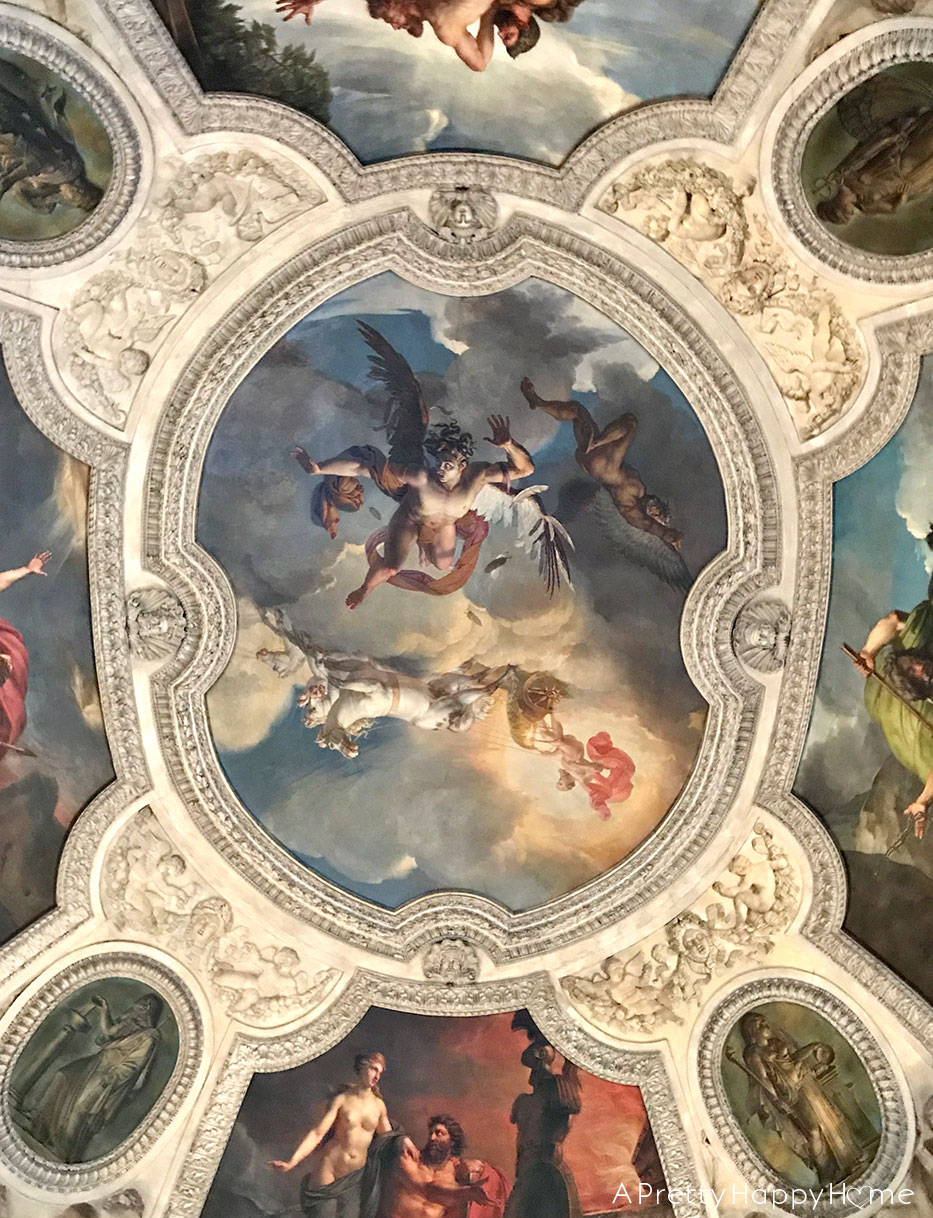
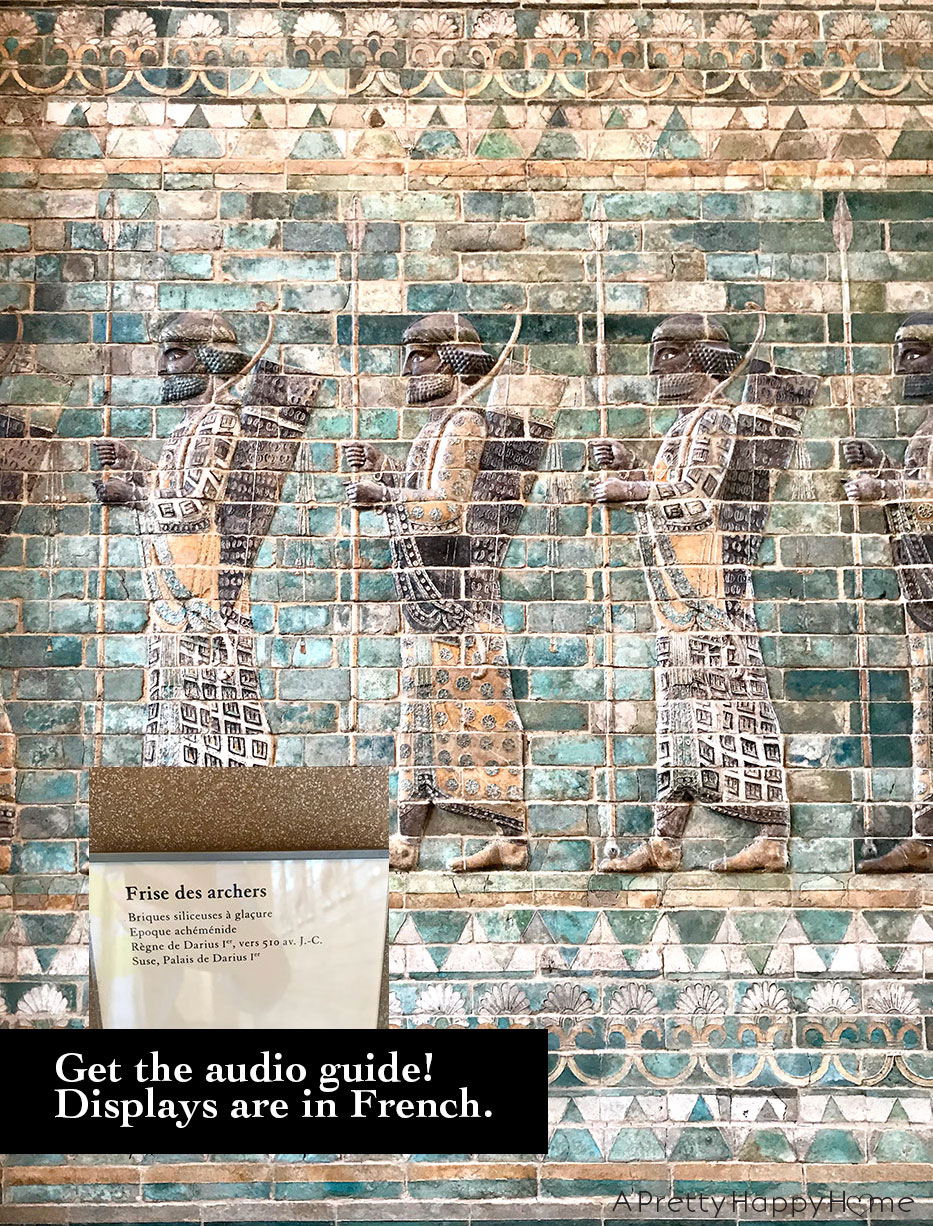
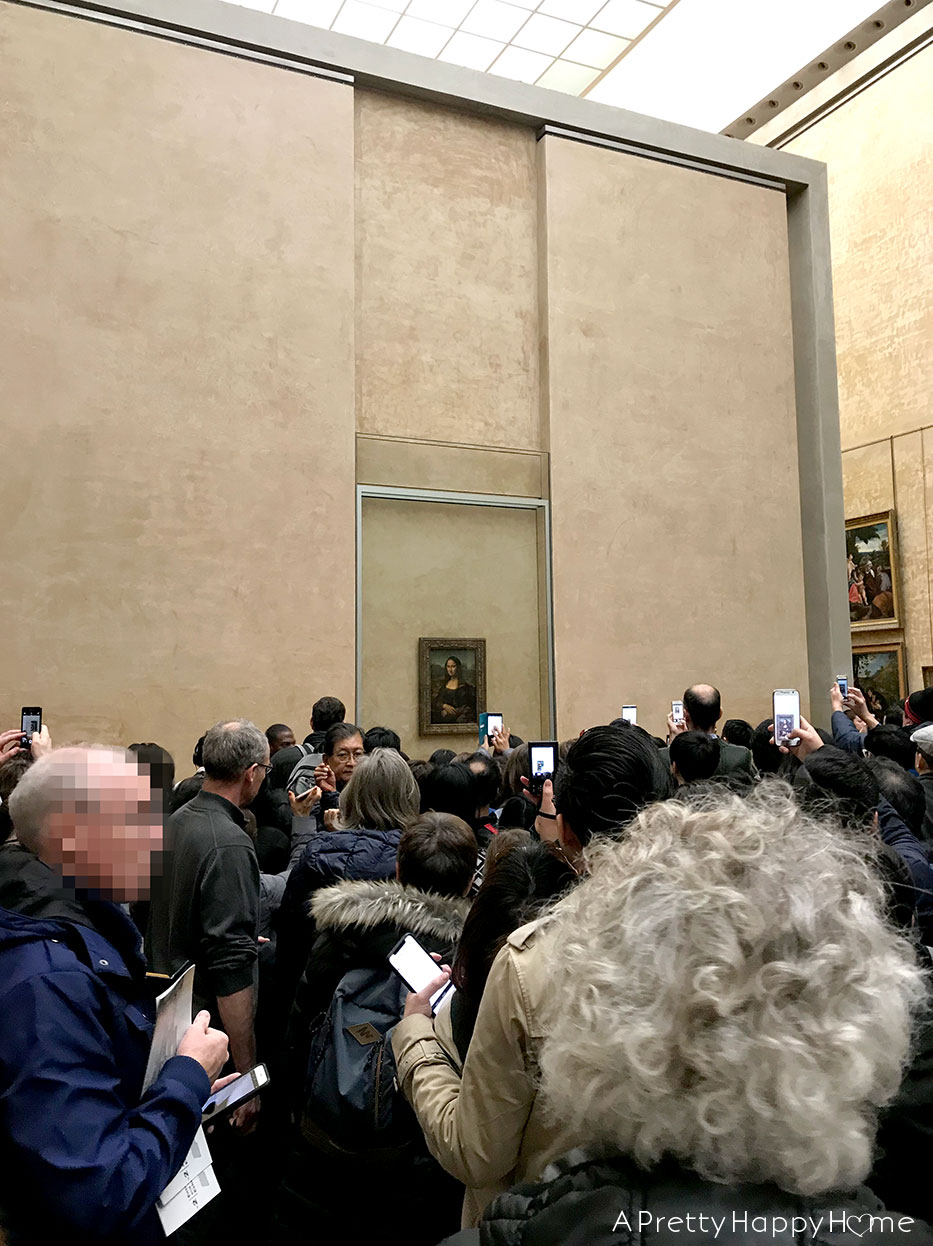

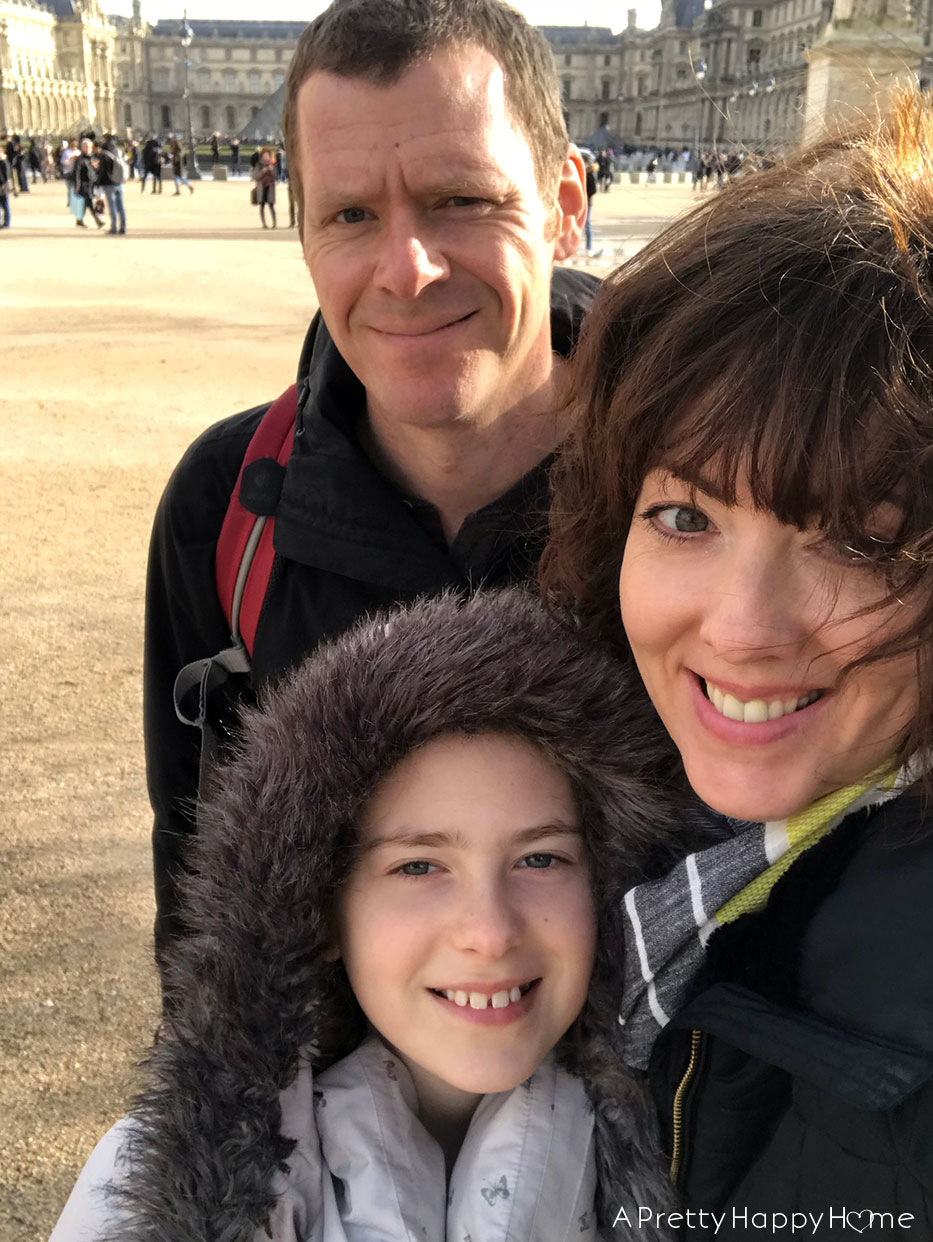




One Comment
Pingback: